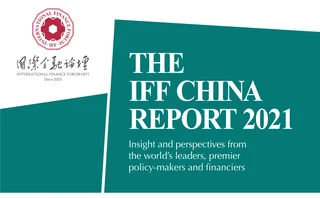
Old concepts, new tricks


In the innovation community, the expression to ‘not reinvent the wheel’ is often used. This is a superb formula for refinement but certainly not a method for innovation and research. The technology paradigm of fintech and present-day computing is evidently still based on innovation from the days of early computer scientists Alan Turing and John von Neumann.
In China, those working in this field abide by the older theories promoted by Chinese scientists in the 1980s and 1990s, namely the General Systems Theory (GST) and Cybernetics and Information Theory (collectively known as SCI). The theoretical foundation of the contemporary technological sector – whether artificial intelligence (AI), machine learning, big data or blockchain – cannot do without SCI, and especially not the GST.

Fundamental subjects discussed by the GST include the relationship between the whole and the sum of its elements, evolutional versus catastrophic change, positive versus negative system feedback, and so on. Many projects carried out now have little to do with the so-called AI – and there is no universally approved definition on what human intelligence is anyway. AI today is more about machine learning capabilities to carry out the systematic automation that fills in the shortcomings of humans.
China’s scientific theories at the end of the 20th century were in fact quite advanced. So why have we ended up following in others’ footsteps over the past 20 years? Take, for example, professor Wang Xuan from the technology conglomerate Founder Group: his laser photo-typesetting system has led the world in this area since its advent, despite being created in incredibly difficult conditions in China. The reason behind it was that its starting point was the operating systems, chips and algorithms – not application. It is time to reflect on whether we are leading the world’s technological development or following the pace of others.
Interestingly, people in the scientific and technological communities are not obsessed with new wording of concepts because they understand that most fundamental concepts are not new, and that the implementations are advances, not innovations. It could be argued that there have been no substantial breakthroughs yet in science and technology in the 21st century. In this day and age, technological development could be summarised as merely the well-
established thoughts of former scientists realised by means of higher efficiency, lower cost and advanced engineering – that is, using scientific methods to iterate old concepts into new advancements.
Cybernetics is still the major technology paradigm, though AI is a hot topic nowadays. The financial industry needs fintech to understand the situation and respond with a command execution in an efficient and effective manner, with the fastest possible response time. It is more a paradigm with cybernetics than with AI, and is a standard automated process equipped with digital and intelligent feedback loops.
A recent article analysing the core competence of ByteDance – creator of the social media platform TikTok – could be used as an example. To outsiders, ByteDance provides strong intelligent algorithms and recommendations as a service, yet few understand how these recommendations are made. Intelligent algorithms are the result of digital technology embedded into every step of the data collection and decision-making process. This, in essence, is based on digitalisation of everything. It is the foundation of machine intelligence from machine learning. It is precisely the framework implemented at Microsoft, into which we have embedded every employee, customer, process and product with a real-time intelligent digital feedback loop.
The framework of cybernetics is similar to that of the central nervous system in the human body and forms the basis of the concept of a smart society. The essence of the world is to generate, transmit, store, calculate, use and display data, and then reconcile this data using negative feedback. This is also how the human body, society and fintech work.
The goal of fintech is to use technology to solve practical problems and to provide accessible financial services. And, on this basis, supervision, management, registration, service and investigation could be incorporated together with digital feedback loops. This is the right path for fintech to assist the digital transformation of banks and financial institutions.
Only users who have a paid subscription or are part of a corporate subscription are able to print or copy content.
To access these options, along with all other subscription benefits, please contact info@centralbanking.com or view our subscription options here: subscriptions.centralbanking.com/subscribe
You are currently unable to print this content. Please contact info@centralbanking.com to find out more.
You are currently unable to copy this content. Please contact info@centralbanking.com to find out more.
Copyright Infopro Digital Limited. All rights reserved.
As outlined in our terms and conditions, https://www.infopro-digital.com/terms-and-conditions/subscriptions/ (point 2.4), printing is limited to a single copy.
If you would like to purchase additional rights please email info@centralbanking.com test test test
Copyright Infopro Digital Limited. All rights reserved.
You may share this content using our article tools. As outlined in our terms and conditions, https://www.infopro-digital.com/terms-and-conditions/subscriptions/ (clause 2.4), an Authorised User may only make one copy of the materials for their own personal use. You must also comply with the restrictions in clause 2.5.
If you would like to purchase additional rights please email info@centralbanking.com test test test







